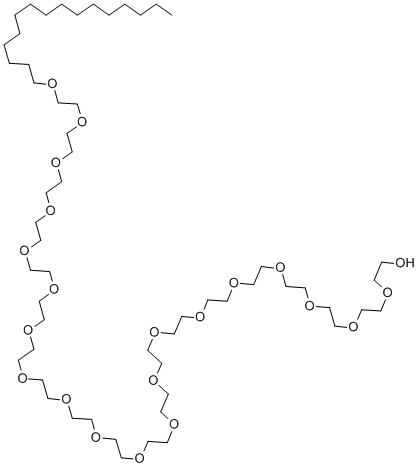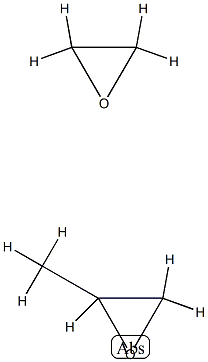Polyethylene glycol monolaurate
Synonym(s):Polyethylene glycol 400 monolaurate
- CAS NO.:9004-81-3
- Empirical Formula: (C2H4O)nC12H24O2
- Molecular Weight: 0
- MDL number: MFCD00148005
- EINECS: 618-396-4
- SAFETY DATA SHEET (SDS)
- Update Date: 2025-12-17 09:49:39

What is Polyethylene glycol monolaurate?
Chemical properties
Liquid
The Uses of Polyethylene glycol monolaurate
Polyethylene glycol monolaurate is a versatile, mid HLB range, surface active agent suggested for use in PVC plastisols (viscosity modifier), coatings (defoaming agent), cosmetic formulations (dispersant, emulsifier, emollient) and textiles (emulsifier).
The Uses of Polyethylene glycol monolaurate
Pegosperse(R) 600 ML is a high HLB surfactant, nonionic and compatible with cationic, amphoteric, anionic and nonionic surface active agents. It is used as emulsifier for personal care and water treatment and as processing aid in textile industry.
The Uses of Polyethylene glycol monolaurate
Polyethylene glycol monolaurate is a surfactant, detergent, and emulsifier in cosmetic formulations.
Properties of Polyethylene glycol monolaurate
| Boiling point: | >260 °C (lit.) |
| Density | 0.985 g/mL at 25 °C |
| refractive index | n |
| Flash point: | >110°C |
| solubility | H2O: 0.1 g/mL, clear, very faintly yellow |
| Hydrophilic-Lipophilic Balance (HLB) | 17.9 |
| EPA Substance Registry System | Polyethylene glycol monolaurate (9004-81-3) |
Safety information for Polyethylene glycol monolaurate
| Signal word | Warning |
| Pictogram(s) |
 Exclamation Mark Irritant GHS07 |
| GHS Hazard Statements |
H302:Acute toxicity,oral H315:Skin corrosion/irritation H319:Serious eye damage/eye irritation H335:Specific target organ toxicity, single exposure;Respiratory tract irritation |
| Precautionary Statement Codes |
P261:Avoid breathing dust/fume/gas/mist/vapours/spray. P264:Wash hands thoroughly after handling. P264:Wash skin thouroughly after handling. P270:Do not eat, drink or smoke when using this product. P301+P312:IF SWALLOWED: call a POISON CENTER or doctor/physician IF you feel unwell. P302+P352:IF ON SKIN: wash with plenty of soap and water. P305+P351+P338:IF IN EYES: Rinse cautiously with water for several minutes. Remove contact lenses, if present and easy to do. Continuerinsing. |
Computed Descriptors for Polyethylene glycol monolaurate
New Products
4,4-Difluoropiperidine hydrochloride tert-butyl 9-methoxy-3-azaspiro[5.5]undecane-3-carboxylate Indole Methyl Resin N-Isopropylurea N,N-Dicyclohexylcarbodiimide(DCC) MELDRUMS ACID 5-METHYLISOXAZOLE-4-CARBOXYLIC ACID Magnessium Bis glycinate Zinc ascorbate 1-bromo-2-butyne 2-acetamidophenol 9(10H)-anthracenone Erythrosin B, 4-Piperidinopiperidine 2-((4-morpholinophenylamino) (methylthio) methylene) malononitrile 2,4-dihydroxybenzaldehyde 3-(4-morpholinophenylamino)-5-amino-1H-pyrazole-4-carbonitrile Methyl 2-methylquinoline-6-carboxylate 2,6-dichloro-4-nitropyridine 4-Bromo-2-chlorobenzonitrile 2-(benzylamino)acetic acid hydrochloride 4-(tert-Butoxycarbonylamino)but- 2-ynoic acid 3,4-dihydro-2H-benzo[b][1,4]dioxepine 1-Phenyl-1-cycloprppanecarboxylicacidRelated products of tetrahydrofuran








You may like
-
 Polyethylene Glycol Monolaurate (n=approx. 10) CAS 9004-81-3View Details
Polyethylene Glycol Monolaurate (n=approx. 10) CAS 9004-81-3View Details
9004-81-3 -
 3-(4-amino-1-oxoisoindolin-2-yl)-1-methylpiperidine-2,6-dione 98%View Details
3-(4-amino-1-oxoisoindolin-2-yl)-1-methylpiperidine-2,6-dione 98%View Details -
 614-19-7 98%View Details
614-19-7 98%View Details
614-19-7 -
 3112-85-4 Methyl phenyl sulfone 98%View Details
3112-85-4 Methyl phenyl sulfone 98%View Details
3112-85-4 -
 20677-73-0 (2,2-diethoxyethyl)methylamine 98%View Details
20677-73-0 (2,2-diethoxyethyl)methylamine 98%View Details
20677-73-0 -
 3-(4-(hydroxyamino)-1-oxoisoindolin-2-yl)piperidine-2,6-dione 98%View Details
3-(4-(hydroxyamino)-1-oxoisoindolin-2-yl)piperidine-2,6-dione 98%View Details -
 57381-49-4 2-bromo-4-chlorobenzonitrile 98%View Details
57381-49-4 2-bromo-4-chlorobenzonitrile 98%View Details
57381-49-4 -
 4,6-dichloropyrimidine-5-carbaldehyde 98%View Details
4,6-dichloropyrimidine-5-carbaldehyde 98%View Details
5305-40-8
Statement: All products displayed on this website are only used for non medical purposes such as industrial applications or scientific research, and cannot be used for clinical diagnosis or treatment of humans or animals. They are not medicinal or edible.
